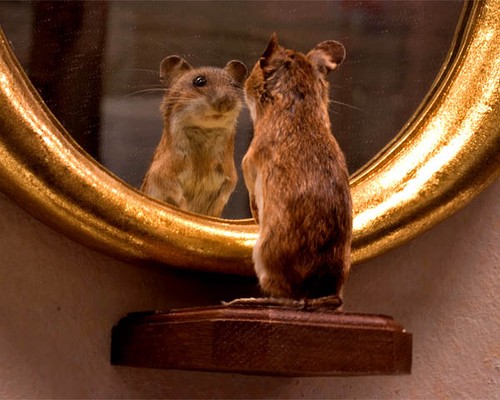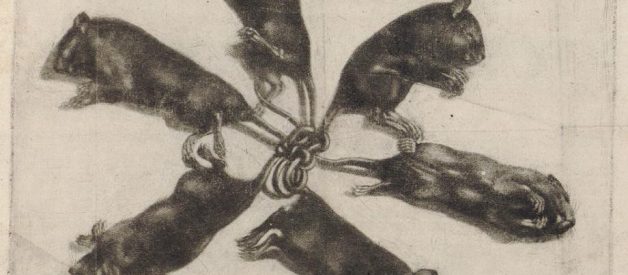 It?s everything you feared?and more.
It?s everything you feared?and more.
For those lucky enough to be unfamiliar with the idea of The Rat King?I?ll sadly be your guide through this twisted corner of natural history.
This creepy article is now a podcast! Hear tales of the Rat King and more from Naturalish on iTunes now.
As of September 2017, this monstrous mess of a creature seems to be back in the popular consciousness ? and I?m at a complete loss. Rumored sightings in major cities and some cooption in popular video games seemed to have reignited a curiosity in, well?the ?rats that get tied together by their tails? fad. And it didn?t pass quietly, thanks to a flock of science-writers all adopting the same narrative: ?Rat Kings Are Real?OR ARE THEY?!?
 Ugh. Sorry in advance.
Ugh. Sorry in advance.
Well, yes, they?re real, and the evidence is fairly substantive. On top of the dozens of rumored sightings, there?s decent video and a hefty handful of museum specimens to make a pretty ironclad case. But cutting through all that cheese, I want to explore a new take on the Rat King phenomenon. I want to dive to the deep, gooey core of the WTF and amp up our analysis to eleven.
What makes Rat Kings so unnerving up in the first place? And for a creature that so elegantly walks the boundary between myth and biology?can we even begin to classify this abomination of nature?
(Hint: We can, and it?s fascinating. Oh and just be warned, these images get pretty skeevy.)
First?ARE RAT KINGS A MYTH?
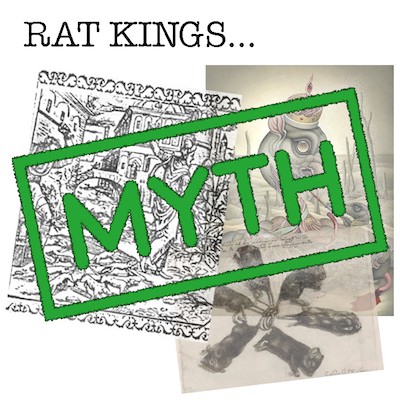 Rats have been disgusting for hundreds of years. Shocker.
Rats have been disgusting for hundreds of years. Shocker.
As per usual, we start with history, and to my genuine surprise the saga of Rat Kings goes back much further than I had expected. As a cryptid, the mythology tells of a rat leader (a king, naturally) that demands to sit high atop a throne of lower, pleasantly rats. This tangled, mangled nest of lesser rodents becomes a living dominion of nastiness, representing the twisted and evil nature of the one king sitting high atop his suffering legacy.
Deep.
Also, German. The story initially spread across Europe in the late 1500?s during an era of reformation in Germany after the rise of Lutheranism and a Peasants? Rebellion in 1524. Commoners across Europe weren?t looking too favorably towards the ruling class, and the idea of a Rat King ? originally Rattenknig in German ? resonated amongst a populace that thought rulers were exploiting their sovereignty. Martin Luther was quoted famously as saying ?finally, there is the Pope, the king of rats right at the top.? The metaphor stuck.
Now beyond this mythology, there?s a larger question that looms on the horizon?
ARE RAT KINGS REAL?
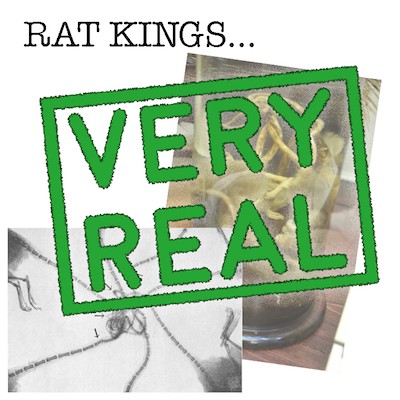 Multiple peer-reviewed papers, guys. This isn?t a passing fad.
Multiple peer-reviewed papers, guys. This isn?t a passing fad.
Evidence would say yes, but intuition says otherwise. Although I suppose that doesn?t really matter.
According to an actual scientific paper published on the phenomenon?yes, there have been 58 ?reliable? Rat Kings recorded, of which six are preserved for the public to see. The number of individuals in each specimen ranges from 3 to the low 30s, and in all but one instance, the species observed was Rattus rattus, the common black rat. Insane, right? This ?urban legend? seemed perfectly suited for folklore spawned from Renaissance-era Europe, but no. It actually does exists.
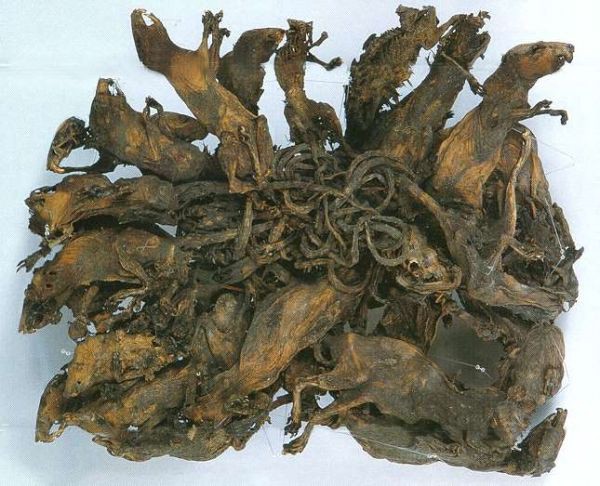 The largest specimen recorded (above, 32 rats) was discovered in 1828. It?s still on display in Altenburg, Germany. I guess you can go check it out? You do you.
The largest specimen recorded (above, 32 rats) was discovered in 1828. It?s still on display in Altenburg, Germany. I guess you can go check it out? You do you.
And yet?scientists are skeptical.
Despite there being a half-dozen specimens floating around museums today, the magnitude of most evidence could lend itself to fraud, some researchers think. The rise of Rat King specimens came during an era when deceptive and manipulated evidence of cryptids was a common occurrence ? like how travelers would fetch a pretty penny for unicorn horns they knew to come from real animals like narwhals or oryx. To drive the argument further, recorded sightings of the Rat King have stalled since the 1800s, with only one ?verified? specimen in 1986 and another in 2005 to keep the story alive.
So this begs a major question from skeptics?what?s to stop people from knotting the tails of dead rats together and claiming fame? Nothing, really, and many rat experts think this to be the most common case. Especially considering that most rats would gnaw off their own tails before succumbing to starvation as a King.
But can we discount all the evidence because of a few skeptic scientists? Or, possibly?
ARE RAT KINGS NATURAL?
 Sorry again! This article keeps getting worse.
Sorry again! This article keeps getting worse.
I?d like to think that in our modern age of video and Internet, we can find better evidence than a few museum relics. And we can.
This below video isn?t exactly rats?but I still consider it a big check in the ?real? column. And it?s not just one viral Squirrel King on YouTube that caught my interest; there?s another story from 2013 that tells of the exact same phenomenon. So far, so good.
When looking for actual, natural explanations for the phenomena, scientists have a few hypotheses. Tails must become knotted together through some binding agent, possibly ice or blood as posed by some researchers, or feces, food, or sebum (oil gland secretions) as posed by others. Black rats also have semi-prehensile tails, and so certain theories claim that in cold conditions, rats may coil together naturally and wind up unintentionally knotted into a grotesque, inescapable mass.
In the case of squirrels, like above, it?s not entirely uncommon for tree sap to glue together the tails of juveniles huddled together in a nest. Still ? that doesn?t mean you should take viral internet videos at face value. I stumbled across a June 2017 post from The Sun that makes a stunning claim about a Rat King video that?s?wildly ignorant. The creature is anything but kingly; just a caravan of baby shrews that follow closely behind their mother as she leads the way. Quit being too dramatic with your claims, Internet! It makes my Rat King research that much harder.
As for naturally-occurring Rat Kings, it seems like the evidence can?t be entirely written off. In some cases the phenomenon can indeed be created under organic conditions ? and that?s all we really need. For my final question, though, I want to consider one last definition for the Rat King that takes a more biological perspective.
IS THE RAT KING?MODULAR?
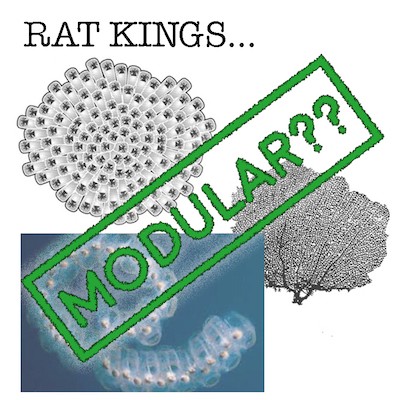 This last one might be a stretch.
This last one might be a stretch.
Modularity is pretty amazing, and it?s actually the first idea that popped into my head when doing some preliminary sleuthing on Rat King biology.
It?s most commonly observed in plants, fungi, and some coelenterata (jellyfish and corals) where a ?single organism? is composed of multiple, often genetically-identical ?individuals.? Think of how we might classify a colony of coral polyps as one animal, even though the structure is actually comprised of hundreds of independent creatures working as one whole.
So, you know, just like a Rat King.
The comparison doesn?t hold up from a strictly textbook perspective?the ?individuals? that form a Rat King aren?t genetically identical. Plus, they?ll never really survive as a fused unit. Rats work better as loners and evolution intends to keep it that way.
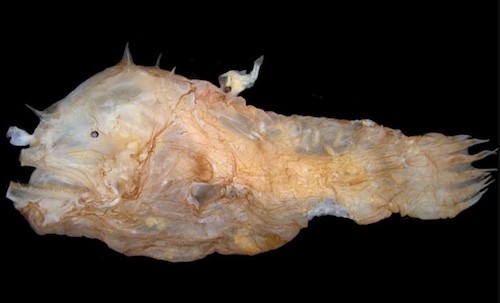 A mating pair of anglerfishes! King and Queen of the sea.
A mating pair of anglerfishes! King and Queen of the sea.
But the connection is an important one to make. There are indeed species on this earth that grow, live, and die together as a collective organism?and that?s pretty fundamental to pinning down the Rat King mystery. Apart from modularity, there are also mating pairs of anglerfish that fuse bodies after reproduction. And don?t forget about genetic chimera that combine the DNA of not just two individuals, but two different species. So ?animal fusions? do have some semblance of science behind them, even if the Rat King doesn?t fit evenly into any one box.
And yet, this perspective does help us answer one of our earlier questions ? what makes the Rat King so unnerving? The idea of modularity is well-researched in biology, but it?s not talked about very often. Unitary organisms (the normal kind) make up an overwhelming majority of life on earth and come with a reasonably static ?blueprint? that can?t be modified. Modular species are funky, though. There?s no clear way to understand what the species is ? where one creature begins and the other ends.
We?re disgusted at the idea of a Rat King for the same reason we once considered conjoined twins to be the subject of circus sideshows. Modularity isn?t something that ?clicks? with our understanding of the world ? both from a natural perspective, but also from our perception of ?self? that has spawned oodles upon oodles of philosophy textbooks.
In the natural manifestation of a Rat King, an individual animal becomes disfigured and dies due to its fusion with other creatures. In the mythological story, the allegorical ?Rat King? suffocates its subjects by removing their autonomy ? turning lesser beings into merely an object to be perched upon.
Across the board ? myth, reality, and nature ? the Rat King represents the same ideals: a creature that removes the ?rat-ness? of rats and turns them into a monster.
 You?d think we?d be over it by now.
You?d think we?d be over it by now.
So why the resurgence? The Rat King reboot really began in the 70’s and 80’s before catching on like wildfire today, which may have been kickstarted by video technology around that time, having lead to a notable rise in Bigfoot hype as well.
But more recently, I think it?s fair game to point a finger at social media, the truest Rat King of all. Modern Internet has reawakened a primal fear of being absorbed, stripped of autonomy, and and subjected to the unnatural whims of a modular mutation. Is this resonating at all? To some artists (like filmmaker Lars Von Trier) the metaphor rings real. Or maybe I?m overreaching. That happens a lot too.
Still, the next time you think you see a Rat King, check to make sure you?re not looking in the mirror. Oh, you weren?t? Because Rat Kings are actually real? Well that?s just as messed up. Sorry about nature being just totally gross all the time.
